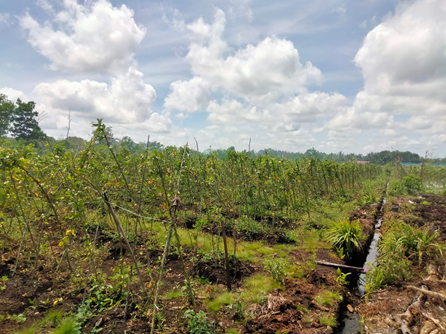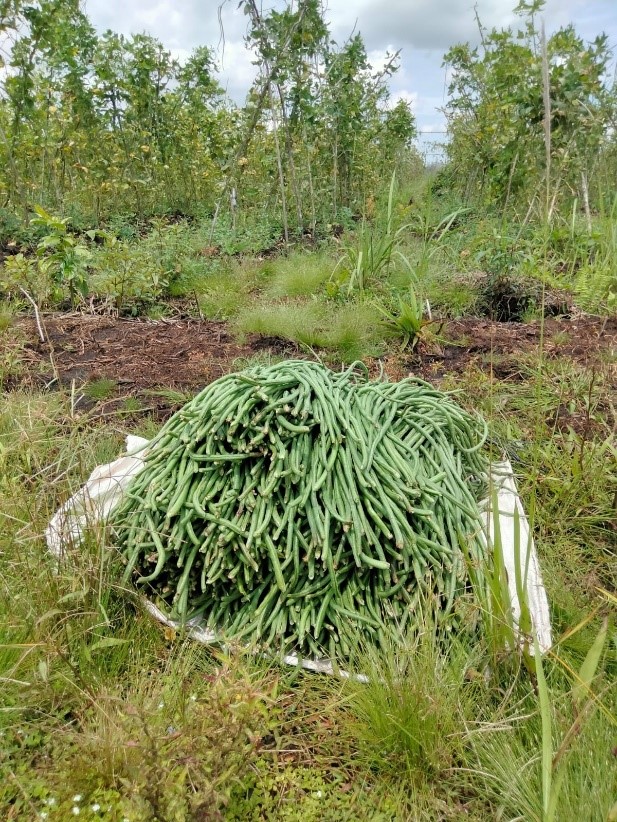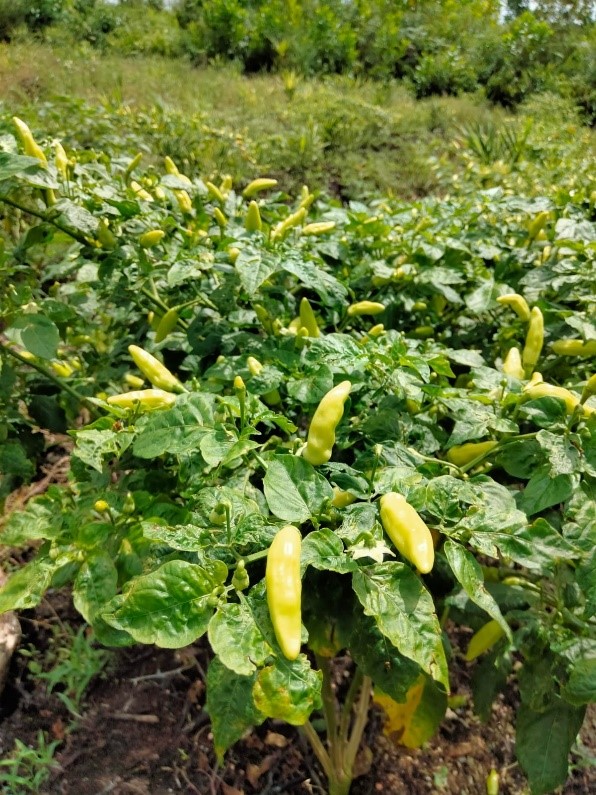Stories
The Challenges of Peatland Farming
Oct 6, 2022 by Eli Nur Nirmala SariBanner Image By : Eli Nur Nirmala Sari/WRI Indonesia
Kusmawadi, 50 years old, is a peatland farmer from Mulyorejo Hamlet, Limbung Village, Sungai Raya District, Kubu Raya Regency, Central Kalimantan. That afternoon, the WRI Indonesia team had the chance to talk to Kusmawadi on the on-loan one-hectare field that he was managing.
"I’m borrowing this land for five years, free of charge, without any rental fee," he began his story. He told us how many of his neighbors have unmanaged lands. They are left abandoned and overgrown with shrubs. “I was unemployed while their lands were infested by shrubs, so I just borrowed the land. At least the land will be kept clean," he said.
The Mulyorejo Hamlet is settled not far from the Supadio Airport, Pontianak, only around 15 minutes away by car. The whole Mulyorejo Hamlet sits on a peatland and most of the residents are peatland farmers.
Peatland farming has its own challenges, as stated by Kusmawadi. "I have only been managing this loaned land for one year. Previously, this land was full of shrubs. There were also many trees. It was difficult to clean manually," he said.
According to Kusmawadi, land burning is considered more practical for clearing. However, land burning can trigger peatland fires when uncontrolled. Joint land clearing can be the solution to make manual land clearing easier.
Another challenge faced by farmers is the acidic nature of peatlands. For this, Kusmawadi had to use coal or dolomite. Since coal is expensive, Kusmawadi chose dolomite.
“When we first started cultivating the land, I used one sack of dolomite for each bed. Since then, I haven’t used dolomite again,” said Kusmawadi. He also said that one bed is 1 meter x 20 meters and the price of dolomite at that time was IDR20,000 per kilogram.
Kusmawadi shared his experience growing various crops on the land he manages. “I first planted eggplants, but it wasn’t good. Eggplants are easily exposed to fusarium,” said Kusmawadi, referring to the fungus-caused crop disease. “Fusarium exposure is difficult to manage. Even the drugs recommended by the agricultural trainers don't work." Kusmawadi ended up experimenting with other crops, such as ginger, cucumber, chili, pumpkin, Chinese okra (gambas), tomato and long bean.

When the WRI team visited Kusmawadi’s field, he and his colleagues were seen harvesting long beans. According to him, long beans take 60 days to mature. “The harvest period usually starts after 60 to 90 days. After that, the crops must be replaced,” he added.
Kusmawadi said that he has gone through 18 long bean harvests in this current rotation, with a total yield of around 1,200 kilograms. He sells the long beans at IDR6,000 to IDR 8,000 per kilogram. “Based on my experience, of all the crops I've tried to grow, chili is the most profitable. Chili prices are relatively stable, between IDR60,000 to IDR70,000 per kilogram. At one point, it even reached IDR95,000 per kilogram," said Kusmawadi.

Kusmawadi always plants different crops on his one-hectare land instead of just one crop. Right now, he is planting Chinese okra, chili, eggplant and pumpkin in addition to the long bean. Kusmawadi said that by planting different crops, he has alternatives to get higher prices from a different crop when one crop’s prices drop. This allows him to cross subsidize the different crops.

“Crop prices are determined by market price. When the yield for one crop increases because many are growing the same crop, the selling price will drop. When the yield for one crop decreases because not many people cultivate it, the selling price is usually higher,” said Kusmawadi. For that reason, Kusmawadi grows different crops for each season based on his observation of crop prices in the market and to minimize the risk of pests and diseases.
Kusmawadi tries to grow crops that he thinks can be sold at high prices, even though sometimes his predictions are wrong. However, whatever challenges he faces, Kusmawadi is happy with his work as a peatland farmer.